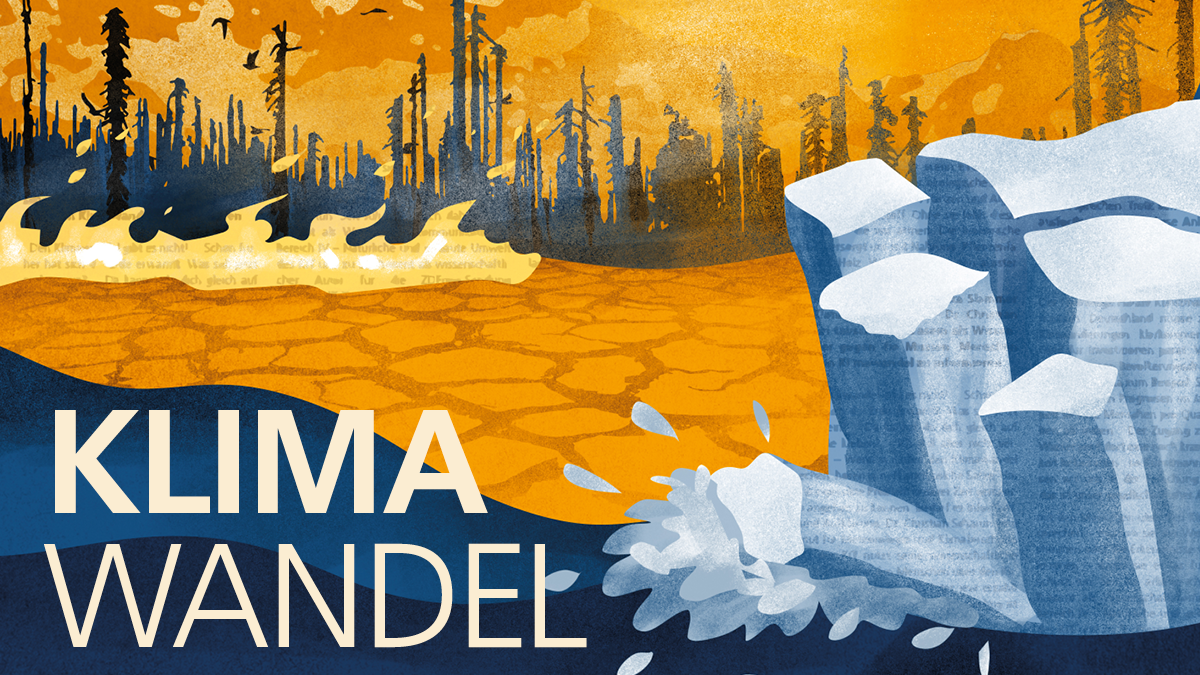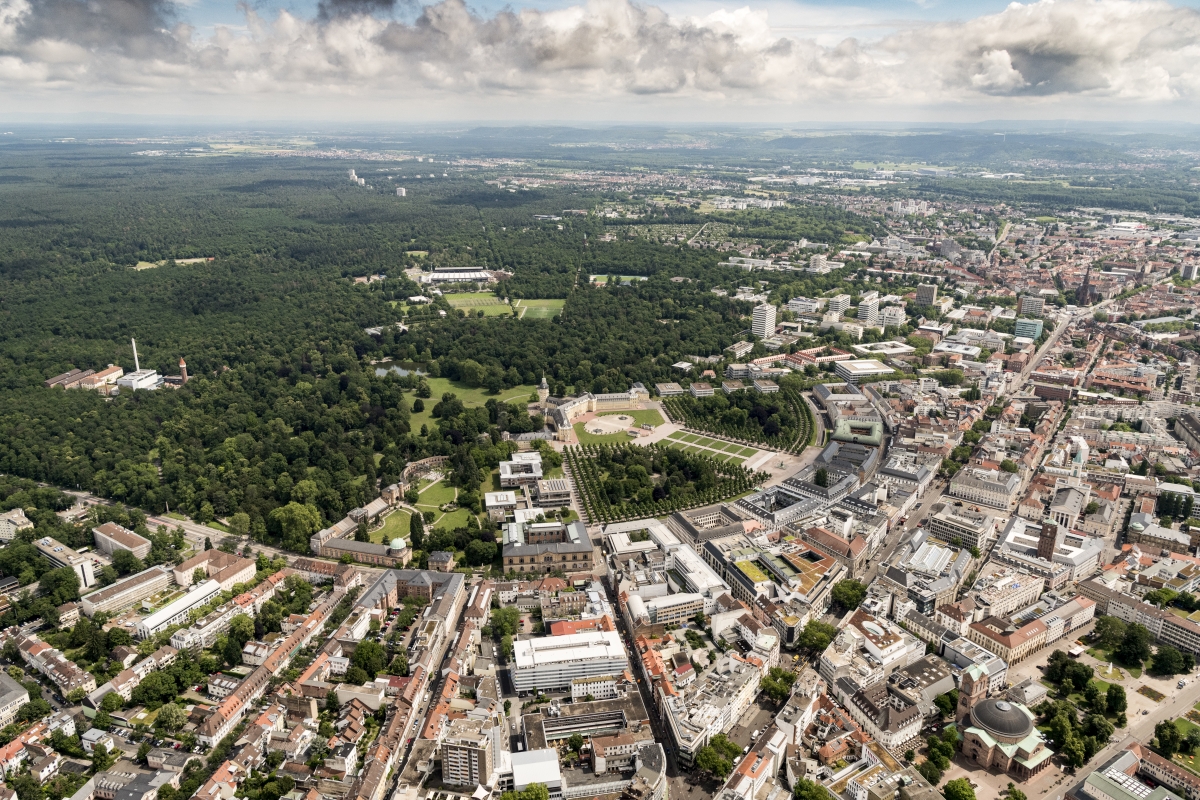What Will the Future of German Forests Be Like?
Climate change is associated with increasingly frequent droughts. This increases the risk of forest fires. On a walk through the forest, forest scientist Dr. Somidh Saha from Karlsruhe Institute of Technology (KIT) advocates more research and courage to experiment.
Dr. Somidh Saha stands in front of a red oak tree in the forest at the outskirts of Karlsruhe. He is looking up to the crown, the impressing tree is far higher than the beeches and spruces around. “Actually, this tree should not exist in the Hardtwald forest. Before Christopher Columbus, only English, sessile, and downy oaks existed in Southwest Germany. The red oak comes from North America.”
The head of the Sylvanus research group at the Institute for Technology Assessment and Systems Analysis (ITAS) at KIT does not know when and why it was planted right here. Apart from red oaks, other species from distant global regions are growing in the Hardtwald forest and around the castle in Karlsruhe. These species were imported in the 18th century on behalf of the founder of Karlsruhe, Margrave Karl III Wilhelm of Baden-Durlach, and his family. “They cultivated the forest and protected it for hunting. And they planted exotic trees like conkers, maple-leaved planes, common robinias, and red oaks for esthetic reasons. Over the centuries, other species were added.”
Somidh Saha lays his hand on the trunk. “Today, we are lucky that these trees are growing here. They are an unintended long-term experiment. They help us to look back and understand how neophytes, i.e. plants imported from other regions, cope with the challenges of climate change in the German forest.”

Issue 3/2023 of the research magazine lookKIT focuses on climate change.
Read Magazine
In the expert portrait, Somidh Saha explains how trees affect the urban climate and how their resilience can be improved.
View portraitA Vital Question for the Forest in Germany
Could tree species from other regions of the world be the solution for the German forest under conditions of climate change? “A big dilemma in forest research are the large time scales,” Saha explains. “We researchers also do not know exactly what will be – and this especially applies to forest ecosystems, the development of which may take centuries or even millennia.” However, climate research models predict with high certainty that Germany will eventually have a Mediterranean fire climate. “Germany already is a country of forest fires and, in the future, fires will be bigger and occur more often.”
Conditions in the Hardtwald forest would be ideal for forest fires, the forest scientist worries. “The forest is very dense and produces much biomass. When the climate becomes warmer and drier, forest fires of high intensity will result in the worst case. In a cultural landscape influenced by humans, this risk is very high, as most fires are caused by humans either intentionally or negligently. Repeated fires would turn forests, such as the Hardtwald, into steppe-like areas that are highly susceptible to invasive species. Cities often are sources for the dispersion of such plants.”
This would mean the loss of the forest with all its essential functions for humans. “The forest not only is the habitat of animals and plants. It protects our supply with drinking water, it improves the urban climate, it supplies raw materials, and it is an important recreation area.”
While Somidh Saha is listing other ecosystem services worth protecting, he reaches a new destination in the Hardtwald forest. This time, it is a native tree, a copper beech. It lies on the ground completely dried out. Somidh Saha breaks off a twig, the dark brown leaves are rustling. “The repeated droughts probably were too much. Trees are mostly dying slowly, but this one here just dropped down.”
In the past five years alone, 180,000 hectares of forest died in Germany. Often, the high speed of change is underestimated. “About 32 percent of the German territory are still covered by forests. If this is to remain so, we will have to do much more.”
Success Cannot Be Guaranteed
Saha sees good reasons to plant trees that better cope with the hot and dry climate. “This is an extreme measure in an extreme situation.” But he knows: “Success is not guaranteed.” KIT studies of red oaks in the city of Karlsruhe, for instance, revealed that the tree that is thought to be highly robust probably is superior to European species in only some phases of its life and tends to weaken at older age.
Moreover, species diversity on and around the foreign species is lower than around native oak trees. “The forest soil is no flowerpot into which you can plant whatever you like,” the scientist says. “Trees and soils, fungi and animals, all forest inhabitants undergo complex co-evolution and form a common ecosystem.”
Hence, there are also good reasons to do less or nothing to protect the forest and to give it the opportunity to adapt undisturbed. This “do-nothing approach” is the radical alternative to “assisted migration,” as forest restructuring with foreign trees is called.
“Again, success cannot be guaranteed,” Saha says. And it would take very long or might not work at all in a landscape with fragmented forest areas. “But also European trees may have surprises in store.” On remote mountain slopes in the Black Forest, a dwarf copper beech can be found. It develops very slowly and manages to survive on dry and extremely meager soil.
Mixed Approach to Restructuring Forests
Among high spruces, we are approaching the last stop on our walk through the Hardtwald forest. Somidh Saha wants to show us a place cleared recently. Today, a dense young forest is growing here. “The trees existing here were not protected, but chopped down. Doing this, a monoculture was removed and something more varied is growing now.” Now, domestic species can grow undisturbed and it is possible to additionally plant groups of suitable species from other climate zones.
“This mixed approach enhances species diversity and resistance to climate change. At the same time, the carbon binding rate is increased,” Saha says. “Planting of groups of trees was tested after the Lothar hurricane in 1999 and good results were achieved. For forest restructuring in the climate crisis, I consider this mixed approach a suitable one.”
Karlsruhe as a Real-world Lab for the Forest in the Climate Crisis
With their liking of exotic tree species, the margraves of Baden once turned Karlsruhe into a real-world lab for trees. Today, more than 200 species exist in the city and its surroundings, Including many neophytes. “We should use this legacy for systematic research and study the use and suitability of trees that have grown in our city for a long time already,” Saha says. “This will help us improve the selection of species and ways of managing the forest of the future.”
According to Saha, it is of crucial importance to massively extend research now, to train the experts of tomorrow, and to experiment. KIT could play a central role in these activities. “Why don’t we continue to plant new tree species in Karlsruhe and study them? We could try to grow fire-resistant cork oaks in the garden of the castle!”
Dr. Martin Heidelberger, October 18, 2023
